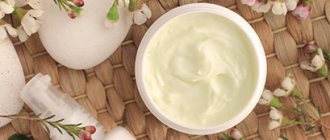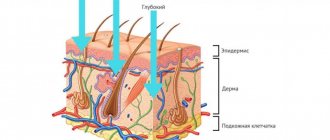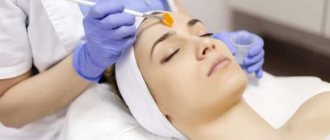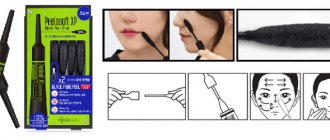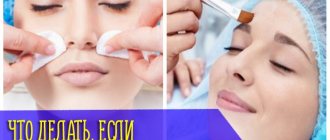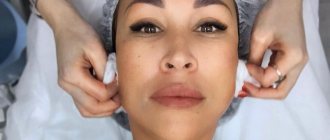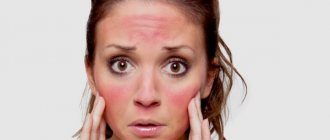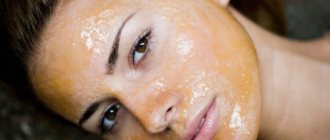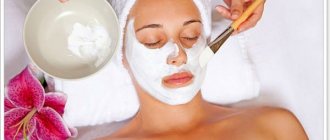Chemical peeling is equally loved by cosmetologists and clients. It allows you to correct involutional changes in the skin caused by temporary and solar aging, eliminates inflammation and hyperkeratosis, lightens pigmentation, stimulates skin renewal, and evens out microrelief.
Modern drugs are peeling systems with complex compositions and auxiliary components, mild action, a shorter rehabilitation period and a more pronounced effect due to the synergy of assets. Gone are the days when clients put up with the need to “hide” from others and wait for the skin to heal. Of course, it is impossible to completely avoid hyperemia and peeling when it comes to deeper peels. However, there is no need to disappear from society for several days.
In accordance with this approach, Mesoderm has updated its usual line of chemical peels, improved the usual formulas and introduced completely new formulations. In addition, the series turned out to be incredibly economical in price, so the products can easily lay claim to the title of one of the best peelings. Let's see what their differences and advantages are.
What are the contraindications?
The procedure is a type of aggressive effect on the epidermis, so it is not allowed for everyone. Contraindications include:
- stage of exacerbation of infectious, viral, bacterial, fungal processes on the skin;
- unhealed wounds, cuts, abrasions, scratches;
- tendency to form keloid scars;
- tanning 2 weeks or less old;
- chronic diseases in the relapse stage;
- oncological pathologies;
- intolerance to the components of peeling preparations;
- pregnancy and lactation;
- recent laser procedures;
- large moles;
- unstable mental state.
The procedure is not performed if the patient is not feeling well: with fever, pain, high blood pressure, colds, or other ailments.
Preparing for peeling
Preparation for peeling, especially superficial-medium peeling, should begin several days in advance using home care. If this is not possible, be sure to use special preparations with a low acid content before the procedure. This is necessary to reduce the risk of unwanted reactions, as well as preliminary exfoliation and leveling of the stratum corneum for better penetration of the composition. The forms of the preparations can be any - mousse, lotion, tonic before peeling.
If you are prone to the appearance of age spots, medications with melanogenesis inhibitors are also prescribed for home care within a few days - such a cream is also available in the Mesoderm pre-peel line.
PRE PEEL CLEANSER 424155 – 160 ml
PRE PEEL TONER WITH FERULIC AND LACTIC ACID PRE PEEL TONER 424156 – 200 ml
PRE-PEEL INTENCE PRE-PEEL INTENCE 424157 – 150 ml
DEPIGMENTING CREAM WITH ANA COMPLEX AND VIT. WITH RADIANT SKIN 424171 – 50 ml
PRE PIL CLINSER DEGREASING LOTION 424131 – 200 ml
How does acid affect the skin?
To obtain the effect of acid peeling, different components are used, depending on the patient’s age, the condition of his skin, the depth and volume of defects. Each acid has its own mechanisms of action:
- Almond – gently penetrates into tissues, capable of breaking down fats. Reduces the appearance of defects, fights free radicals, and has antibacterial properties. Used to treat post-acne and acne scars. Mostly suitable for superficial peeling.
- Milk – optimal moisturizing and whitening. Restores skin turgor and elasticity, removes inflammation, reduces the depth of wrinkles.
- Retinoic – promotes collagen synthesis in the body, removes pigmentation. Smoothes out fine wrinkles and improves skin texture.
- Malic acid is a universal acid used to moisturize and saturate cells with oxygen and nutrients. Stimulates microcirculation.
- Glycolic – care for oily skin. Helps with scars, scars, post-acne, eliminates signs of age-related aging. Evens out the texture and tightens pores.
- Ferulic – helps eliminate the effects of ultraviolet exposure. Gently penetrates the dermis, inhibits the inflammatory process, and prevents redness.
- Salicylic acid – dissolves dead epidermal cells, provides deep cleaning of pores. Normalizes the functioning of the sebaceous glands, activates the production of collagen and elastin.
The type of composition for acid peeling, concentration, and exposure time are determined individually by the cosmetologist, depending on the condition of the skin and the age of the patient.
There are three main types of peeling:
- superficial – shallow effect on the epidermis (fruit, glycolic, almond, retinoic, milk);
- median – affects the dermis (salicylic acid, trichloroacetic acid, azelaic acid);
- deep - affects all layers of the skin, down to connective tissue and fiber (phenolic).
Penetrating into the epidermis, the acid burns damaged, old and keratinized tissue, while simultaneously stimulating high activity of regeneration, cell division and the appearance of new structures. Also, chemical exfoliation of the stratum corneum promotes the accelerated production of your own collagen and elastin.
Important! A deep type of cleansing effect is carried out exclusively in special clinic conditions by a cosmetologist. The use of anesthesia and monitoring of the patient's health condition is required.
What skin problems can acid peeling solve?
- Acne
– Acid peels are very popular for treating most forms of acne. Organic acids have strong antibacterial properties and also help regulate sebum production. A series of procedures in combination with other cosmetic methods gives excellent results. - Pigmentation
– organic acids eliminate pigment spots and freckles, while being as effective as laser or photorejuvenation. Pigmentation caused by hormones does not respond to light or laser, but responds well to acid treatment. There are special formulations for application to the skin that give a rejuvenating and brightening effect. - Age-related changes
– Acid peels are an excellent remedy for eliminating signs of aging. As the skin ages, its natural desquamation (exfoliation) process slows down, leaving dead cells, dirt and sebum on the surface. Plugs appear inside the pores. Organic acid helps speed up the process of cell renewal and has a moisturizing effect. An excellent result is achieved by medium peeling, which not only removes dead skin cells, but also stimulates rejuvenating processes. In the skin structures, the production of collagen, the main protein of the skin, as well as hyaluronic acid, elastin and other compounds that form its basis, is enhanced. As a result, small wrinkles disappear, and deeper ones are smoothed out. - Post
-acne is acne marks that can be removed, depending on their depth, using medium or superficial peeling. The procedure is in no way inferior to laser resurfacing and other hardware methods.
Acid peeling before and after
Advantages of this procedure
Acid peeling has many advantages:
- effective at any age, provided the correct composition is selected;
- stimulates cell renewal, promotes rejuvenation;
- activates tissue regeneration;
- helps reduce the depth of scars and cicatrices;
- effective in the treatment of acne, acne, comedones;
- restores the structure and oval of the face;
- removes hyperpigmentation, freckles, age spots;
- normalizes a healthy complexion;
- promotes collagen production, thereby increasing skin elasticity and firmness;
- inhibits fading processes;
- reduces the depth of wrinkles, fights sagging;
- reduces pores, normalizes sebum production;
- controls water balance;
- provides full access of oxygen and nutrients to cells;
- stimulates blood circulation and microcirculation;
- restores velvety and smoothness of the skin.
Chemical exfoliation is one of the effective ways to rejuvenate and heal the skin. The technique provides the fastest possible results; it is an excellent alternative to surgical interventions and plastic surgery.
Disadvantages of this procedure
Since exposure to acids on the skin is an aggressive process, this technique has disadvantages:
- a large list of contraindications;
- painful sensations due to chemical burns of the skin;
- long rehabilitation period - for superficial and medium penetration of acids is 10 - 14 days, for deep penetration - up to 2 months;
- possible appearance of hyper- or hypopigmentation - dark or light areas on the skin;
- Usually one procedure is not enough - treatment and rejuvenation must be carried out over a course;
- acids can cause allergies, even if there were no complaints of a reaction before the procedure.
After the session, you should not sunbathe for a long time under the sun or in a solarium, since ultraviolet radiation can cause complications. Therefore, acid exfoliation is not recommended in the summer; it is better in the cold season.
How is this peeling done?
The first consultation with a cosmetologist includes taking an anamnesis, examination, and identifying contraindications. After this, the specialist selects the acid composition, determines its dosage and exposure time. The doctor also gives recommendations on preparing for the session:
- 20-30 days before the procedure, you need to apply a low-acid composition to the skin, which will be recommended by a specialist - this will help the skin get used to the product, become more receptive, but not experience serious stress. A week before the session, use of the product is stopped.
- Scrubbing should not be used 7 days before the procedure. Such procedures can damage the skin and leave tiny abrasions on it, which can cause complications.
- You must stop tanning within 14 days. Go outside only after applying a cream with a high SPF content.
- People prone to herpes symptoms are recommended to take antiviral drugs.
Then it’s time for the procedure itself:
- Applying products (according to skin type) that remove dirt, dust and degreasing agents.
- The use of local anesthetics - anesthetics in the form of a spray or solution.
- Treatment with a special composition that prepares the surface of the skin for acid to soften the upper layer of the epidermis.
- Applying the preparation with fruit acid - in one or several layers for a certain time.
- Neutralization of acid composition with special means.
- Treatment of the skin with moisturizing, toning, soothing preparations.
The effect will be noticeable after the skin has recovered from exposure to acids. The number of sessions is from 3 to 10 with a weekly interval. The results obtained last for six months with proper care. Subsequently, maintenance procedures may be needed, no more than 2 courses per year.
New chemical peelings Mesoderm – preparations and composition
The best part is the emergence of completely new drugs for the brand. Clients know these acid peels well, easily agree to the procedures and often already come to the cosmetologist with such a request.
AZELAIC PEEL + pH 2.4
424164 – 30 ml
The drug of choice for correcting oily and combination skin, problem skin with acne. Azelaic acid is considered to be a tyrosinase inhibitor. However, its keratolytic, anti-inflammatory, and antioxidant characteristics have long been proven. Azelaine peeling affects all parts of the pathogenesis of acne, but does not cause resistance. Due to the “classical” suppression of melanogenesis, it prevents the formation and corrects pigmentation, incl. post-inflammatory.
Compound:
- Azelaic acid – 10%
- Salicylic acid – 13.5%
- Lactic acid – 12%
- AHA complex – 0.5%
+ Willow bark salicylates, gluconolactone, zinc, sulfoconcentrol.
Indications:
- Oily, combination skin
- Increased secretion of sebum, blockage of the ducts of the sebaceous glands
- Acne at any stage, various forms of post-acne, incl. post-inflammatory spots
- Follicular hyperkeratosis, melasma, seborrhea sicca
JESSNER'S PEELING JESSNER'S M-PEEL+
424166 – 30 ml
A modified version of the well-known “standard” peeling for problem skin, correction of age-related changes and pigmentation of any origin. Due to the action of additional assets, it works more gently and does not require the cessation of social activity in the post-procedure period. Can be used on the face and any parts of the body.
Compound:
- Salicylic acid – 13%
- Lactic acid – 12%
- Resorcinol – 13%
- AHA complex – 0.5%
+ RHA – gluconolactone, sulfoconcentrol, lavender extract.
Indications:
- Problem skin, seborrhea, sebum hypersecretion, follicular hyperkeratosis, sycosis
- Acne of various stages, post-acne
- Hyperpigmentation of various origins
- Chrono- and photoaging, actinic keratomas
FERULIC PEEL+ pH 2.6
424162 – 30 ml
For vascular pathologies, rosacea, rosacea, the use of peelings is significantly limited. Ferulic peeling is the drug of choice in this case. This acid is a powerful natural antioxidant, therefore it has a diverse effect. In particular, it reduces the vascular pattern and shows high effectiveness against signs of photoaging and solving problems of oily skin with a damaged barrier. At the same time, it can be safely used during periods of high solar activity.
Compound:
- Ferulic acid – 13%
- PHA – 10%, AHA – 1.5%
- Lactic acid – 14%,
- Glycyrrhizic acid – 1%
+ Rutin, menthyl lactate, mint oils
Indications:
- Vascular pathologies, rosacea, rosacea
- Hyper-reactivity, dehydration, slow regeneration rate
- Age-related changes in sensitive skin
- Tendency to erythema
- Overproduction of sebum, comedones, post-acne
PHYTIC PEEL pH 2.4
424163 – 30 ml
This peeling is called “Hollywood” because of its ability to perfectly even out the complexion. It has a pronounced depigmenting activity along with a mild multi-level effect, good tolerability by all clients and a short rehabilitation period. Can be used in spring and summer.
Compound:
- Phytic acid – 50%
- Citric acid – 5%
- PHA – 10%, AHA – 2%
- Lipoic acid – 0.5%
+ DMAE, arbutin and bearberry extract, vitamin C, sage and lavender oils.
Indications:
- Hyperkeratosis, photoinvolution, age-related and solar lentigo, actinic keratomas
- Post-acne spots, post-inflammatory pigmentation
- Age-related changes, uneven skin tone
- Overproduction of sebum, foci of inflammation
ALMOND PEELING MANDELIC ACID PEEL pH 2.1
The most famous superficial AHA peeling. Suitable for young skin, acne therapy. It is most often the starting point for getting acquainted with chemical peels - due to its ability to simultaneously solve a range of different aesthetic problems, its mild surface effect and the ability to work with it without seasonal restrictions.
Compound:
- Mandelic acid – 30%
- Kojic acid – 2%
+ ANA, RHA, ectoine
Indications:
- Involution of the skin
- Hyperpigmentation of various etiologies, incl. post-inflammatory, medicinal, after using inappropriate cosmetics
- Acne stages 1-2, post-acnetic phenomena, seborrhea
- Dehydrated, stressed skin, smoker's skin
MILK MULTIPEELING LACTI PEEL+ pH 2.7
An excellent option for delicate peeling with quick recovery and minor peeling, well tolerated even by clients with thin, sensitive skin. Lactic acid significantly moisturizes, detoxifies, stimulates cell renewal of the stratum corneum, evens out the microrelief, and brightens the skin.
Compound:
- Lactic acid – 40%,
- PHA – 10%, AHA – 1.5%
- Hyaluronic acid – 0.5%,
- Folic acid – 0.3%
+ Hydrovanse moisturizing complex, amino acid complex, sage and rose damask extracts.
Indications:
- Dehydrated skin, hyperkeratosis, xerosis
- Hyperpigmentation of various etiologies, incl. post-inflammatory
- Photo-, chronoaging, atony, sagging, fine wrinkles, diminished regeneration
- Overproduction of sebum, comedonal acne, post-acne
GLYCOLIC MULTIPEELING MULTI PEEL 4 WITH LACTIC AND SALICYLIC ACID pH 2.0
424161 – 30 ml
The glycolic acid molecule is the shortest among the AHA peels used, therefore it penetrates the skin quickly and deeply, while maintaining exfoliating, moisturizing, antioxidant properties, and has a remodeling effect. Because of this feature, glycolic peeling is used to solve a wide range of aesthetic problems, but the optimal indications are involutional changes and the prevention of aging (at high concentrations). Less saturated formulations are suitable for complex correction of young, oily skin.
To reduce aggressiveness, peeling is traditionally “diluted” with more gentle acids, usually lactic acid. Mesoderm peeling additionally contains a number of plant extracts with a softening, anti-inflammatory, and soothing effect.
Compound:
- Glycolic acid – 20%
- Lactic acid – 25%
- Citric acid – 5%
- Salicylic acid – 2.5%
+ RHA, extracts of horse chestnut, green tea, rose hips, ginseng, lavender
Indications:
- Photo-, chronoaging
- Dehydration, wrinkles, hyperkeratosis
- Hyperpigmentation, uneven tone
- Increased sebum secretion, initial manifestations of acne and post-acne
- Prevention of early, accelerated aging
GLYCOLIC PEELING GLYCO-PHYT PEEL WITH KOJIC AND PHYTIC ACID pH 2.1
424160 – 30 ml
The presence of kojic and phytic acids gives this drug pronounced activity against age spots.
Compound:
- Glycolic acid – 30%
- PHA – 3%
- Kojic acid – 2%
- Phytic acid – 5%
- Hyaluronic acid – 0.5%
+ Ectoine, lactic acid, colloidal silver
Indications:
- Pigment formation disorders of various etiologies, chloasma, melasma
- Manifestations of photoaging, skin involution
- Actinic keratomas, hyperkeratosis, seborrhea
- Acne in the initial stage, post-acne, incl. congestive and age spots
GLYCOL PEELING 70% GLYCO PEEL FORCE pH 1.3
The depth, speed of penetration and severity of the action of glycolic peeling depends on the concentration of the main active and the pH level. This composition is recommended for aging skin and skin with pronounced changes.
Compound:
- Glycolic acid – 70%
- Hyaluronic acid – 0.5%
+ Colloidal gold, ectoine.
Indications:
- Anti-age – involution of the skin, symptoms of chrono- and photoaging
- Hyperpigmentation of various origins, chloasma, melasma
- Skin hyperkeratosis, actinic keratomas
- Seborrheic skin, mild acne
- Post-acne, incl. stagnant spots, post-inflammatory pigmentation
PYRUVIC PEEL CLASSIC pH 1.5
424124 – 30 ml
“Green” peeling with a deeper and gentler effect, well tolerated and controlled, does not cause skin dehydration.
Compound:
- Pyruvic acid 40%
+ Colloidal gold, ectoine.
Indications:
- Hypersecretion of sebum
- Stage 1.2 acne
- Hyperkeratosis, ingrown hair problem
- Chrono- and photoaging
- Hyperpigmentation
RETINOIC YELLOW PEELING ANTIAGE YELLOWPEEL MASK
424123 – 30 ml
The most atraumatic, works from the inside as a regeneration stimulator and remodulator. Has minimal risk of side effects, suitable for young skin.
Compound:
- Retinoic acid 5%
+ Ascorbyl tetra isopalmitate, vitamin E, squalene.
Indications:
- Age-related changes, wrinkles of various etiologies and severity
- Hyperkeratosis, keratomas
- Photoaging, hyperpigmentation
- Normalization of sebum secretion, prevention of rashes
